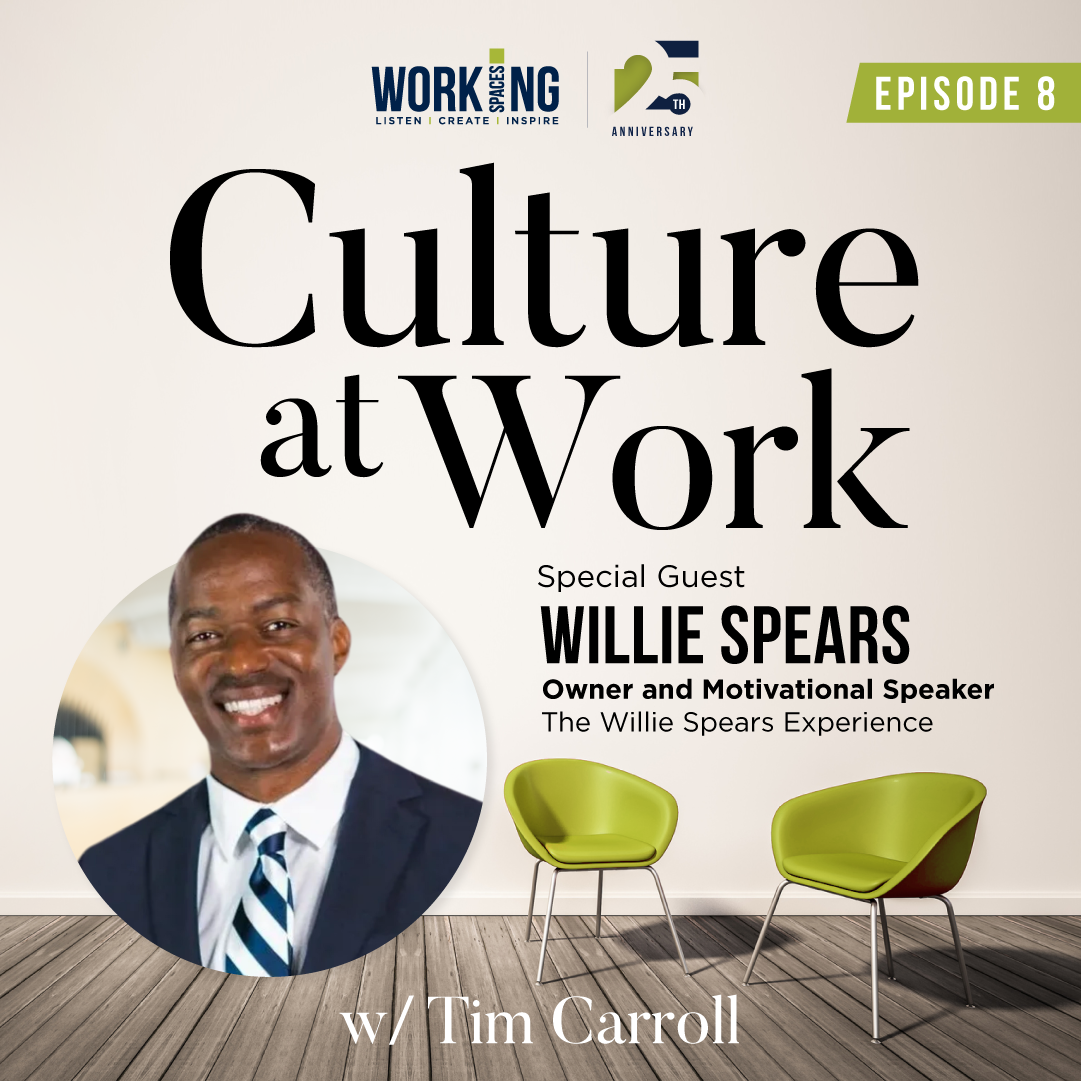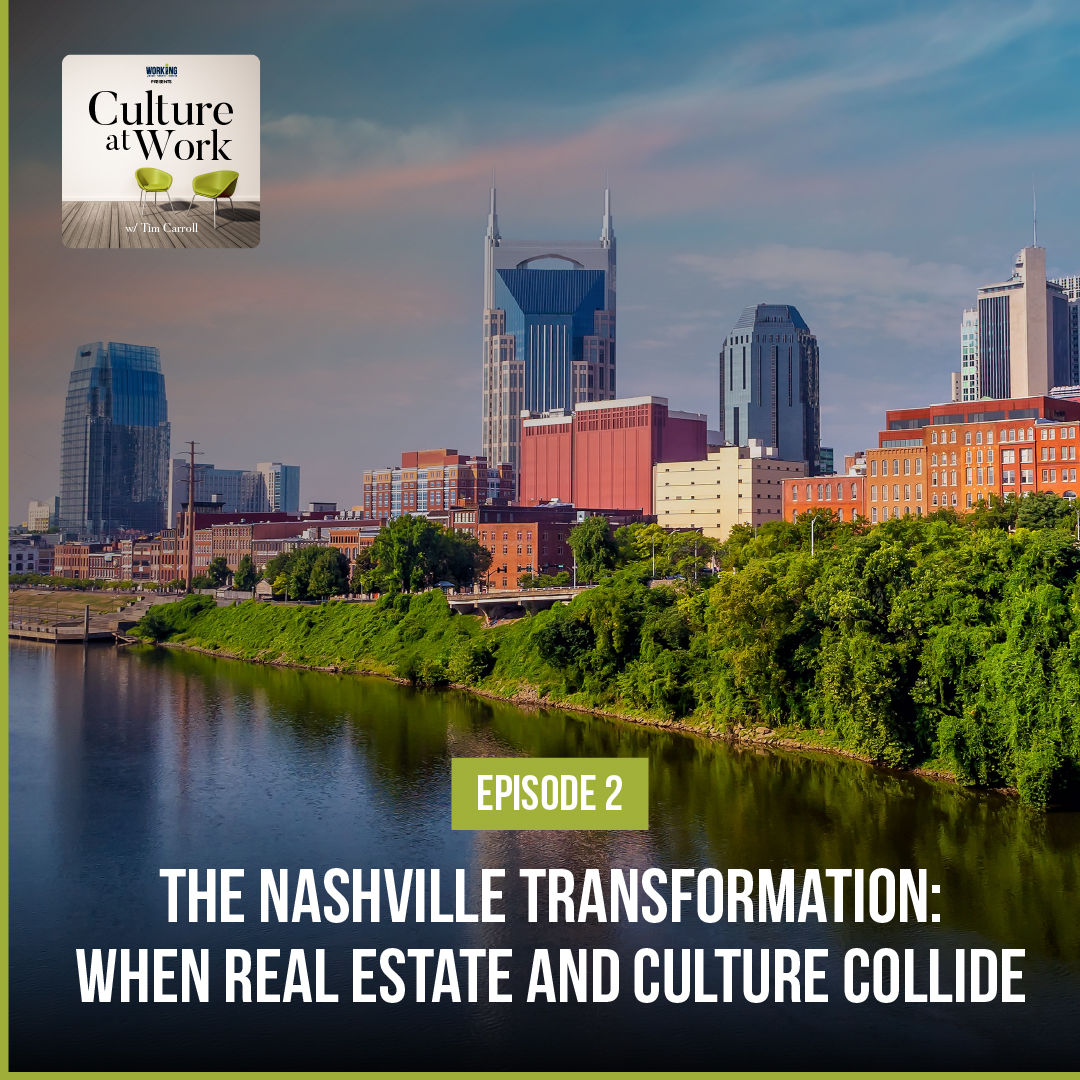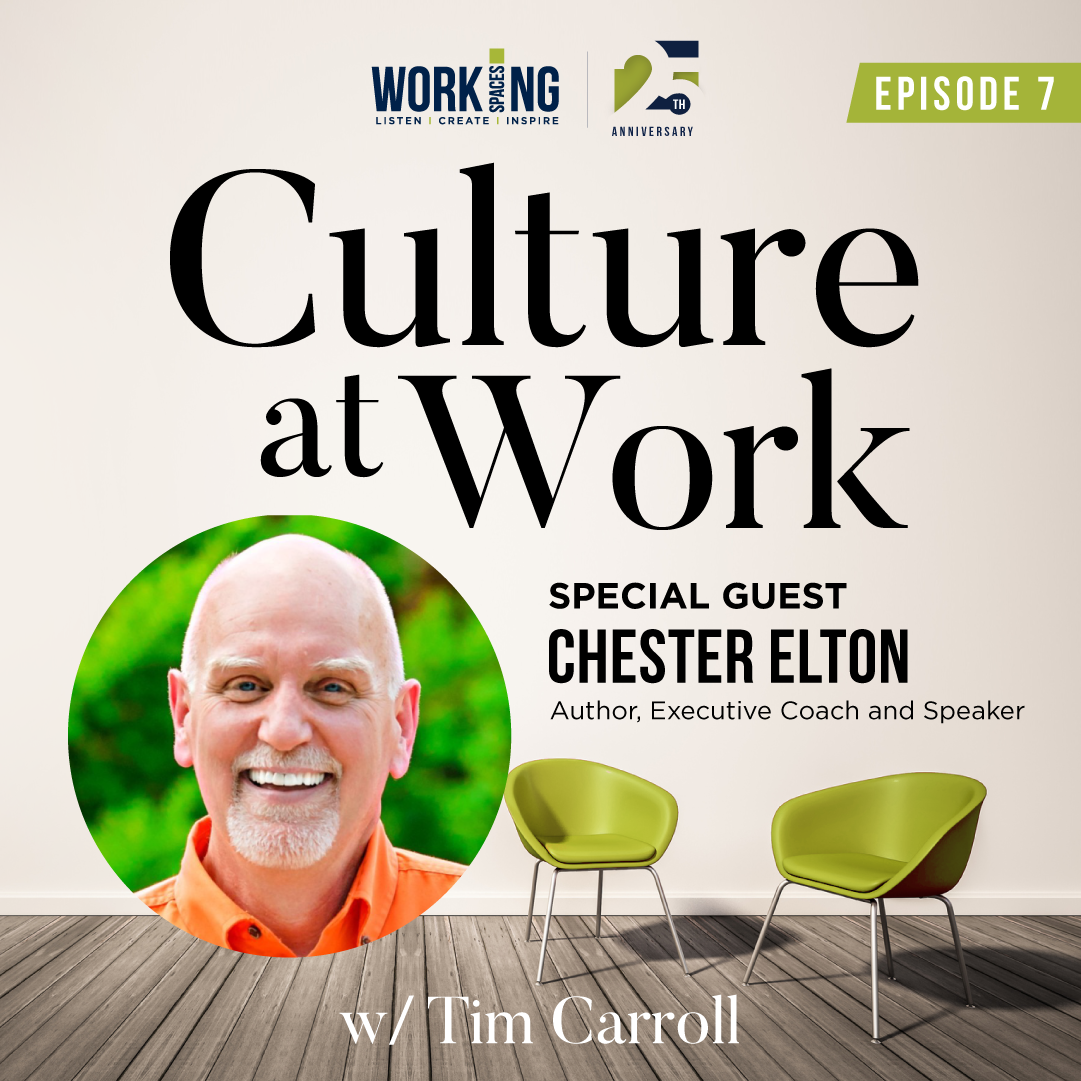Episode Transcript
Tim: Michelle, thank you so much for joining us today. This is a really, really interesting topic: how design impacts culture and what’s happening in the world of design. You have a very unique perspective, traveling around the country. I wanted to start just there—tell us a little bit about what it’s like, and what do you do as the VP of A&D for Kimball?
Michelle: Thanks, Tim, for having me on—what an honor this is! My role here at Kimball International is VP of A&D, which really means I get to help bring the power of design forward across the country. My role includes A&D strategy, connecting with our A&D partners, and bringing design forward through our design strategists, our e-tools, and our showroom experiences.
Michelle: What I love about this role is all the little micro-moments and intangibles that are sometimes hard to pinpoint but are so central to design. I’ve always said design is humankind’s problem-solver. My team and I are constantly solving problems for our end-users, dealer partners like yourself, and the design community—whether through showrooms, A&D, e-tools, or dealer designers.
Tim: With that perspective, you go all over the country, talking to design firms, A&D firms, dealers, and clients. You’re exposed to different perspectives and even regional differences. With that in mind, how would you define culture?
Michelle: Culture is, I believe, the heartbeat of [any group]—in this case, the workplace. Culture is the heartbeat of an organization, but beyond that, a family has a culture, too. Belonging and culture are two sides of the same coin. As humans, we want to belong; it’s an innate desire we all have. Culture shapes everything we do, it shows up in our values, in how we treat our people, in the spaces we provide. I think it’s an invisible yet undeniable force in an organization.
Tim: Belonging—let’s talk more about that. Kimball International has an initiative around creating places to belong. Can you share how important that is and how the design community can create these spaces?
Michelle: Absolutely. Our “creating places to belong” initiative started internally during the pandemic. We’ve always felt our culture is special at Kimball International, but you must always nurture culture, keep feeding it, and be aware of it. During the pandemic, we recognized that without being together, we might lose sight of that. We wanted to be thoughtful about how our people came together when returning to the office. We began asking clients and partners, “What does belonging mean to you?” The responses were powerful—things like “to be seen,” “to feel connected,” and “to have a voice.”
Michelle: This led us to become champions of belonging, to research and understand the business impact. With help from experts at Oxford and Stanford, we found that when people feel they belong, there’s a 50% reduction in turnover risk, 75% reduction in sick days, and a 56% improvement in job performance. We also created a tool that allows a company to identify its culture type and align their space with human needs, sensory elements, and business priorities.
Tim: That’s fascinating. And to your point, companies like Amazon recently announced they’re bringing employees back to the office five days a week. I think that anchor—a cultural space that connects people—matters. Are you seeing that conversation in your travels?
Michelle: Absolutely. My role allows me to see what’s happening across the industry, and there are strong perspectives. Some say culture doesn’t need to be defined by physical space, especially in fully remote companies. But space matters. Culture is an invisible force, and when it’s right, you can feel it in a space. A well-designed space anchors an organization’s values and mission, becoming the silent steward of its identity.
Michelle: When people come to our home office in Jasper, Indiana, the best compliment I receive is, “I wish I could work here.” That’s the power of a space that embodies belonging and culture—it’s something you feel immediately.
Tim: So, we’ve got time for one more question. From your perspective, where is the design industry headed in this country? This seems like a transitional time for all of us.
Michelle: I think the future will be driven by purpose and experience. We’re seeing a balance between individual expression and shared community. Amenity-rich spaces with purpose-driven design are becoming the standard, satisfying both personal and community needs. Purpose and belonging are also key. Younger generations are vocal about working for companies with values they believe in,
Michelle: So, belonging, purpose, and experience—that’s where we’re heading. And design will play a central role in making that happen.
Tim: Michelle, thank you. We’re proud to be a Kimball Select Dealer, to lock arms with Kimball, and drive belonging and great design together. This was an important conversation, and I really appreciate your time.
Michelle: Thank you, Tim. We’re equally proud to partner with Working Spaces and continue championing belonging and impactful design together.


